They entertained a generation of snot-fuelled youngsters in post-war fleapits, and subsequent generations via the medium of summer holiday telly. They were responsible for shaping the landscape of mainstream Hollywood for decades to come. They routinely saved Earth from destruction in thirteen exciting episodes. They kept the exclamation mark in rude circulatory health through the world’s darkest hours. They were the lovely old adventure film serials from the thirties, forties and fifties. The likes of Columbia (Superman vs Atom Man, Captain Video: Master of the Stratosphere), Universal (Flash Gordon, The Green Hornet, The Phantom Creeps) and most of all ‘poverty row’ outfit Republic (with a small mention for plucky Mascot), produced mile upon mile of the sort of transition-wipe-filled, microbudget slam-bang programme filler Lucas and Spielberg spent the best part of two decades trying to resurrect, with massive budgets. But the essential elements of this venerable genre’s ramshackle originals, from Spy Smasher to The Masked Marvel, break down something like this:
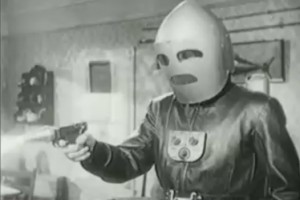 FRANCHISES!
FRANCHISES!
Right from its early days, the serials thrived on a marketable formula. early silent serials like What Happened to Mary, The Perils of Pauline, The Exploits of Elaine and so predictably-titled on, majored in the “flapper in distress” format that’s since become the defining cliche of antiquated melodrama, but was probably regarded as corny even then, with its weekly parade of cloche-hatted heroines being tied to train tracks by their moustache-twirling abductors. But that corniness travelled well, making international stars of the films’ feisty heroines, as well as their abominable antagonists, The Clutching Hand and The Iron Claw. Many of the later serial successes were purloined from other sources. There are your comic strip spin-offs like The Batman, Buck Rogers, Captain America and The Green Hornet. Zorro proved popular enough for eight serials, even if some, like Zorro’s Black Whip, cheated a bit by not actually having Zorro in them at all. Best of them was Zorro’s Fighting Legion, in which a tribe of Mexican Indians worship a little old boy in a tin hat, Zorro effects several deft escapes, including one from a burning church by swinging through a plate glass window right at the camera, and that much-purloined crawling-under-the-stagecoach stunt is performed for neither the first nor the last time. But the most famed are surely Universal’s three Flash Gordon adventures, which set the tone and style of the sci-fi elements in these films until well after the war, despite getting that ‘look’ from the remnants of ‘proper’ Universal films like Bride of Frankenstein. Well, except perhaps the demented third installment, Flash Gordon Conquers the Universe, which for some reason puts half the cast in Robin Hood outfits.
‘Watch out for those giants! They’re dangerous!’ – The Lost City (Super Serial Productions Inc., 1935)
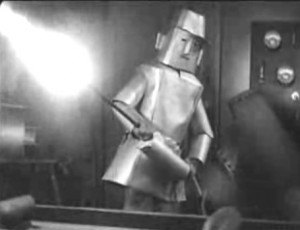 PLOTS!
PLOTS!
As basic as possible, preferably. Due to the serial’s episodic structure, the first episode had to feature the set-up – hero encounters bad guy, bad guy nabs hero’s girl, sticks hero in pit of snakes etc. – with the following twelve-or-so episodes consisting of the same thing again and again, plus at least two punch-ups every week between the opposing forces to help chivvy things along. Who could ask for anything more? Even within these production line limitations, the scenarios couldn’t help but get weirder and weirder, solely due to the number of them churned out, and the consequent increasing desperation to avoid repetition. Like an ever-mutating adventure story made up by two bickering boys mucking about on a patch of waste ground, the plot gets bored with itself, goes off on some bizarre tangent, sets up an ingenious trap, escapes from it in perfunctory manner, goes back to an earlier idea, stops for a bit of a punch-up, and so haphazardly on. Late-period Mascot entry The Phantom Empire, allegedly cooked up by a serial writer under the influence of laughing gas at the dentist’s, was perhaps the most bizarre of them all. Gene Autry plays himself, as a singing cowboy with a radio show, who keeps getting captured by the denizens of a Futurist underground city, every week neatly escaping from the Art Deco caverns, just in time to do his radio show.
‘This is a court of law, not an optical clinic!’ – Son of Zorro (Republic, 1947)
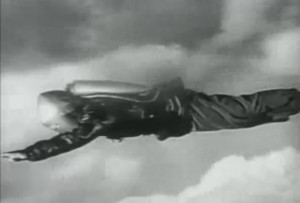 EFFECTS!
EFFECTS!
Howard and Theodore Lydecker are the names to conjure with here. Yes, there was that omnipresent stock footage of a palm tree in a hurricane to signify environmental catastrophe (usually brought about by the antagonist’s new secret death ray), and of course Flash’s time-honoured rockets with smoke coming out the back. But, for their minuscule budget, there was quite a lot of solid model work going on here. Some of the flying scenes in Fighting Devil Dogs, for instance, are still pretty good today, and the much-loved tabletop avalanches and volcano eruptions are still top fun for the unjaded eye. And the physicality of King of the Rocket Men‘s simple springboard/dummy slung on wires combo beats any amount of back projection for our Depression-era money. Then there were the optical effects, the drawn-on-the-film death rays (best example being The Lightning’s zappy ray gun on Fighting Devil Dogs). On the minus side, The Batman (1943) had, as his Batmobile, a, er, car. With a spare tyre on the back and everything.
‘No doubt Vultan will compel the Earth girl to marry him. It is a habit of his.’ – Flash Gordon (Universal, 1936)
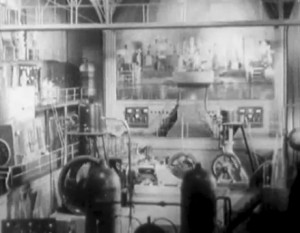 DESIGN!
DESIGN!
This being the age of Art Deco, or maybe just a little bit after it, sci-fi sets had a streamlined, curlicued look. A fragile, plastery sort of streamlined, curlicued look, but a streamlined, curlicued look nonetheless. This is chronologically halfway between your silent baroque era and the gubbins-festooned fifties sci-fi heyday, so a little bit of each is what’s called for. Elsewhere, labs – sorry, secret labs – were festooned with big bakelite knobs and dials. Costumes were threadbare but various, ranging from the genuinely effective – The Lightning off Fighting Devil Dogs had a spiked black helmet and cape combo later half-inched by Darth Vader – to the risibly camp – the denizens of Phantom Empire‘s underground city seem to be wearing campy gear pitched halfway between some modernist ballet costumes and the ever-popular ‘Bob Todd in a dress’ look. And don’t mention The Batman‘s crumpled crepe ears, please.
‘No wonder my plans never succeed. These wild parties must stop!’ – The Spider Returns (Columbia, 1941)
‘I’m mighty grateful!’ ‘That’s all right, Jack.’ ‘You know who I am?’ ‘I should – I’m your twin brother!’ ‘Alan! But I thought you were killed in that plane crash in France last year!’ ‘So did everyone, including the news agency I reported for! That’s why I became Spy Smasher, to fight the Nazis on their own ground! Now it’s time to fight them here! In the United States!’ – Spy Smasher (Republic, 1942)
‘We’ve been tricked by cleverness!’ – The Crimson Ghost (Republic, 1946)
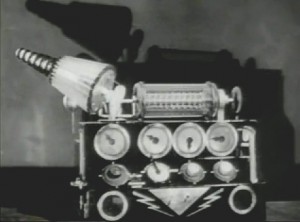 TECHNOLOGY!
TECHNOLOGY!
In Flash Gordon, of course, you had the great Dr Zarkov, forever pulling a new device out of his lab just in time for Flash to use it against the advancing Mongo hordes. Needless to say, Flash had no need of a technical manual in order to operate the thing. Other serials made merry with the gnomic nomenclature. Brick Bradford travelled through space and time via the mysterious Crystal Door. Captain Video battled the evil Vultura with such twirly wonders as the Opticon Scillometer. The Lost Planet played host to over fifty such trinkets, including the Cosmic Cannon, the Thermic Disintegrator and the Prysmic Catapult. You get the formula by now – technically abstract adjective welded to old-fashioned item of weaponry equals acceptable serial gadget. Hardware in Serial World was made with ease of use to the fore. The King of the Rocket Men controlled his hi-tech jet pack with just three knobs – on and off, up and down, and fast and slow. The Crimson Ghost had the titular villain – a bloke dressed, for reasons never adequately explained, in ghost train skull mask and cowl – endlessly going after an electricity-nullifying super weapon called the Cyclotrode: a sewing machine case augmented with bits of twirly tubing and some massive dials on the bottom. In Fighting Devil Dogs, The Lightning battled the Marines in a snazzy ‘flying wing’ aircraft, streamlined to a fault (though still able to do a quick vertical take-off when the need arose). And don’t forget those unwieldy gun-toting robots that looked suspiciously like an old tin boiler on legs, as evinced in just about everything from the Republic stable, from Undersea Kingdom to The Mysterious Dr Satan.
‘With his vibrator, he could bring the city to its knees!’ – Captain America (Republic, 1944)
‘What you thought was butchery was really a marvellous brain operation!’ – The Galloping Ghost (Mascot Pictures, 1931)
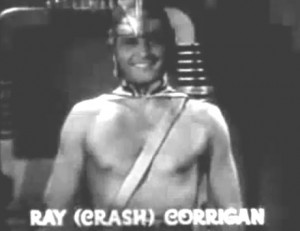 CRASH!
CRASH!
Where would the serials be without Raymond Bernard, fitness trainer to the stars and, as Crash Corrigan, the meaty presence under many a fur costume as, for example, the Mighty Orangopid of Mongo in Flash Gordon: Space Soldiers, or Bonga the gorilla in King of Jungleland. However, he got his big break, sans fake head, as the dashing, fit and mostly topless naval officer in Undersea Kingdom, handily also called Crash Corrigan, riding about with an old professor on his ‘rocket submarine’ (with huge bubbles coming out the back, natch), the requisite stowaway kid and two comedy idiot sailor sidekicks, to mediate in a black-cape-vs-white-cape Atlantean war. When will people learn, eh, Crash? After he retired from films, Crash set up Corriganville, a theme park along the lines of The American Adventure. ‘Start the disintegrator!’ Also, spare a thought for the perfectly-named Arthur Space, a prolific serial veteran whose oeuvre includes various fistfight-tastic bottom drawer Republic entries like Government Agents vs Phantom Legion! Or Canadian Mounties vs Atomic Invaders! Or Panther Queen of the Kongo (sic), where he was an evil scientist scaring folk away from his African diamond mine with giant crayfish, Scooby Doo-style. A job of work and no mistake.
‘She doesn’t hear you because she’s cracked up. You understand me? Cracked up because you don’t have the brains of a moron child!’ – Sky Raiders (Universal, 1941)
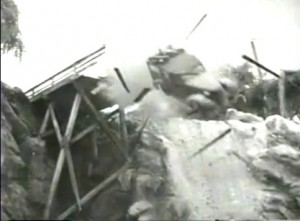 CLIFFHANGERS!
CLIFFHANGERS!
A car goes over the cliff. The hero’s inside. It smashes onto the rocks below. The end. Gasp! But, of course, next week, we see the hero unshackling himself and pegging it out the car just at the last moment (presumably unseen by the first camera). Kids called it cheating, but they still came back for more. And anyway, isn’t it more like a third umpire, giving another view on events? A symbol of Republic’s thriftiness, that same car went over the same cliff in King of the Rocket Men, King of the Forest Rangers, The Crimson Ghost (twice!) and Radar Men from the Moon, to name but four. Other well-worn favourites included the shrinking room, the falling spiked ceiling, piloting a small boat down the ever-narrowing gap between two oncoming larger boats, and any number of burning and exploding buildings housing the bound and gagged protagonist. All immensely satisfying in their innate unsatisfactoriness, as it were.
CRIMSON GHOST: ‘The Cyclotrode’s power is irresistible! Nothing can stop it!’
DUNCAN RICHARDS shoots Cyclotrode. Cyclotrode stops.
DUNCAN RICHARDS: ‘That stopped it, my ghostly friend!’ – The Crimson Ghost (Republic, 1946)


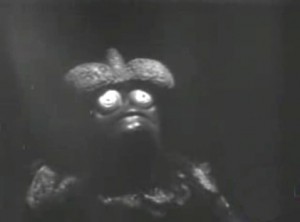
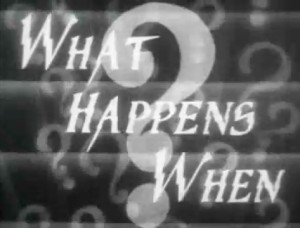
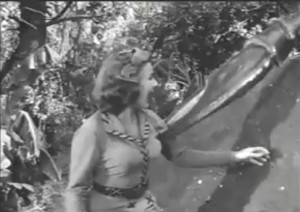
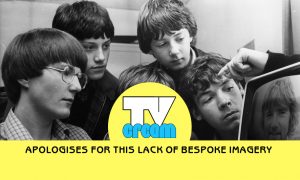



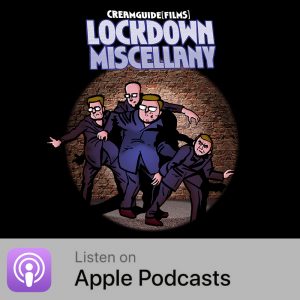
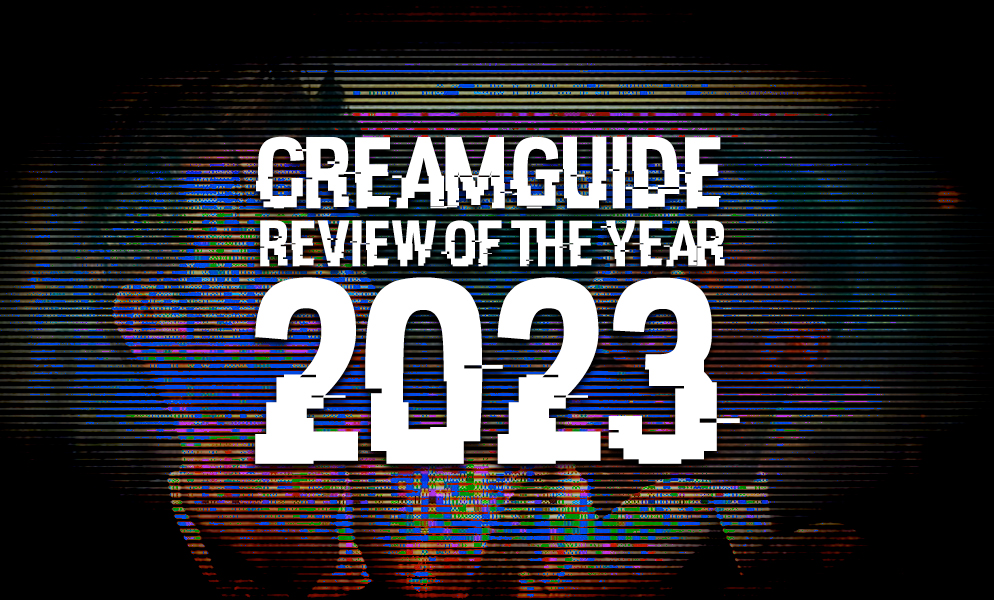
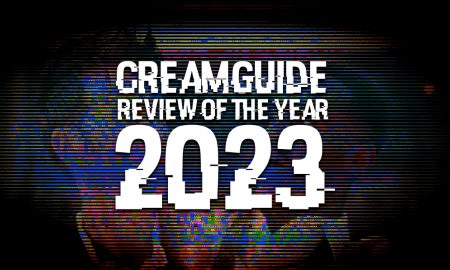
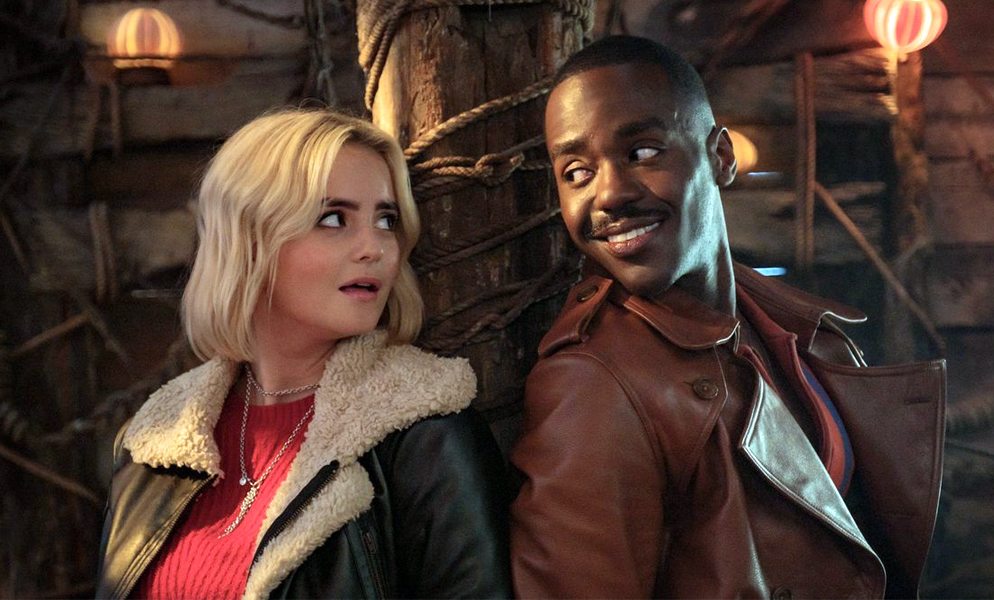
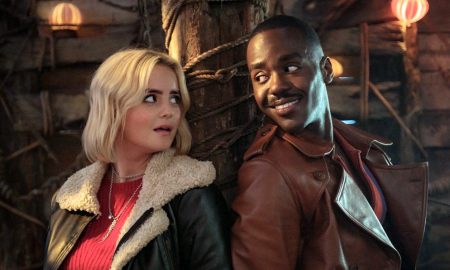
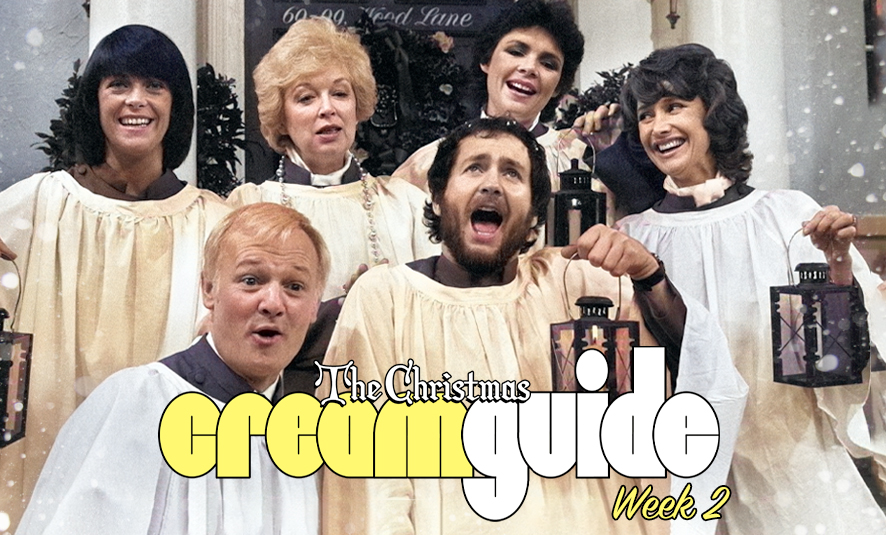
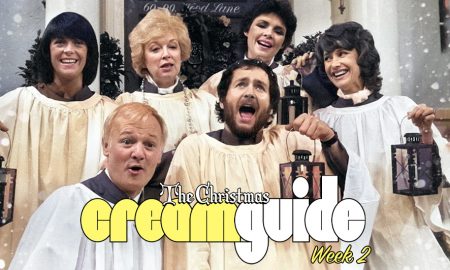
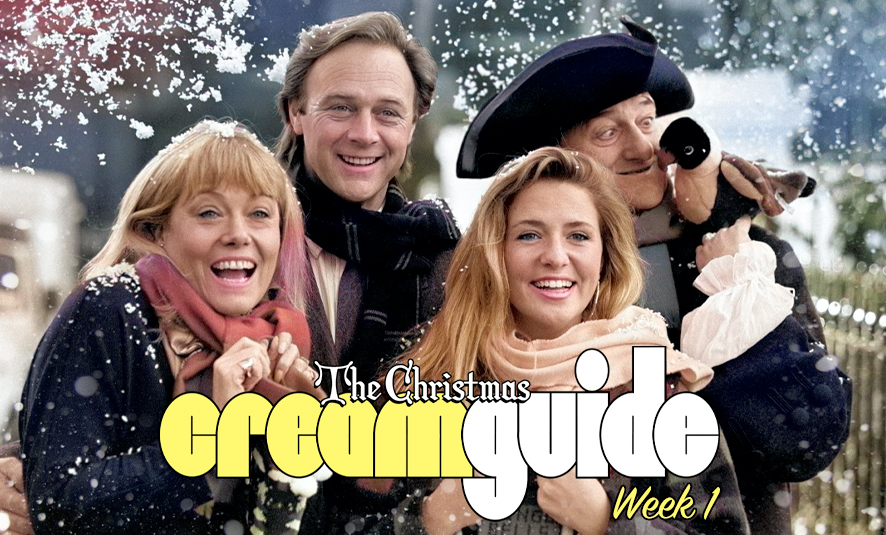
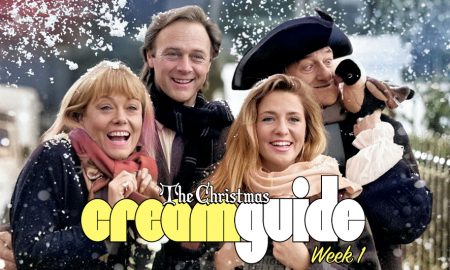
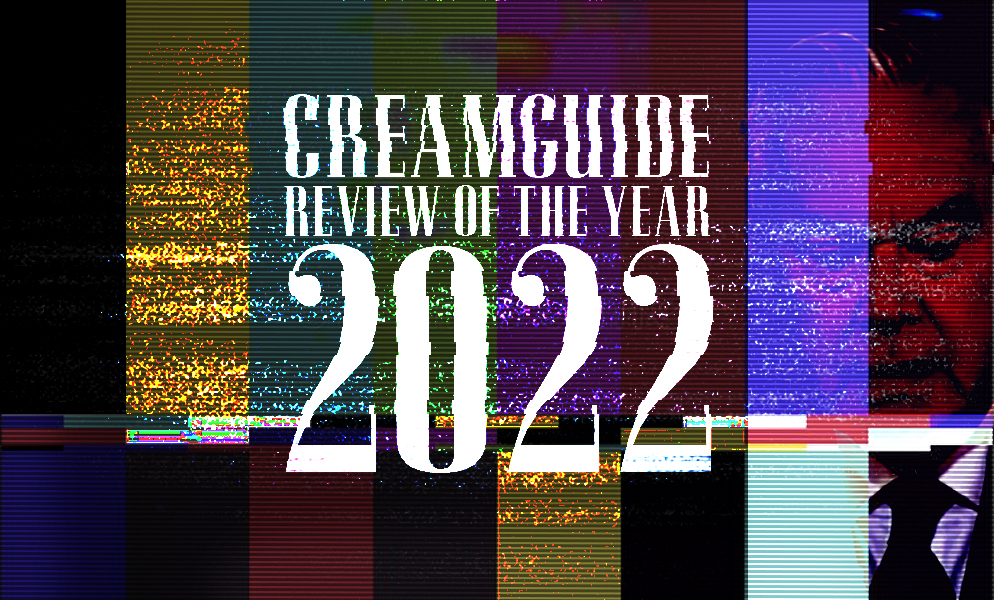
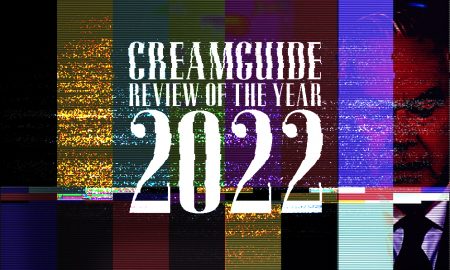

SimonC
March 1, 2010 at 5:59 pm
The late Bob Shaw used to talk with great affection about how the worlds in the sci-fi serials had all this useful ‘fantasy technology’ like antigravity belts or jet packs, but that the minute the filmmakers tried to extrapolate actual technology into the future, things immediately went completely off the rails with ‘portable radio receivers’ that needed two men to carry them or ‘televisors’ the size of a fridge-freezer with an eight-inch screen.
Cindylover1969
March 5, 2010 at 5:13 am
“Kids called it cheating…”
As demonstrated in Stephen King’s “Misery” (the book, not the movie). “Captain Video” was a TV show, however, not a movie serial.
TV Cream
March 5, 2010 at 9:51 am
It was a fleapit-bound film serial as well, at more or less the same time as the telly version, according to The Great Movie Serials by Donald F Glut. (And with a name like that, he should know.)
Richard Davies
August 8, 2010 at 12:09 am
I remember BBC1 showing some of these on summer holidays as late as the tail end of the 1980s, possibly into the early 1990s.
Joanne Gray
March 7, 2017 at 9:28 pm
I can remember them in the mid 70s – the BBC showed Buck Rogers, Flash Gordon and King of the Rocket Men every summer holiday time for seemingly decades. As Buster Crabbe starred in the first two and sets, plots, actors and everything were the same from series to series, we knew immediately it was Flash Gordon because Crabbe bleached his hair for this series. I also remember the Johnny Weismuller (spelling?) Tarzans were shown a lot too, but can’t remember if they were also serials or stand alone movies. Can anyone elaborate on this?
THX 1139
March 8, 2017 at 7:02 pm
The Weissmuller Tarzans were movies rather than serials, they started out as prestigious blockbusters in the 1930s but by the 40s were B-movies. You can tell by how beefy Johnny was in the later ones, plus he would meet tribes of white guys in those because the studio was too cheap to spend much on them. The Lex Barker ones were even cheaper.
richardpd
January 11, 2020 at 12:59 pm
Jonny Weissmuller later played the lead role in the Jungle Jim film series after he became too old to play Tarzan.
Earlier there had been a film serial of Jungle Jim played by Grant Withers.
Glenn Aylett
January 12, 2020 at 11:58 am
The BBC always ran the Weissmuller and Barker films in the school holidays. Also they would run the Tarzan serial with Buster Crabbe, Flash Gordon and Zorro on Saturdays and in school holidays. Some of these would have been 40 years old when I started watching them and were starting to look dated, but as we had a black and white television with a not very sharp picture it didn’t matter. Can always remember one Flash Gordon story where he has to wrestle an orangopoid, an ape like creature with a huge white horn.
Joanne Gray
March 8, 2017 at 8:22 pm
Thanks for clarifying that 🙂